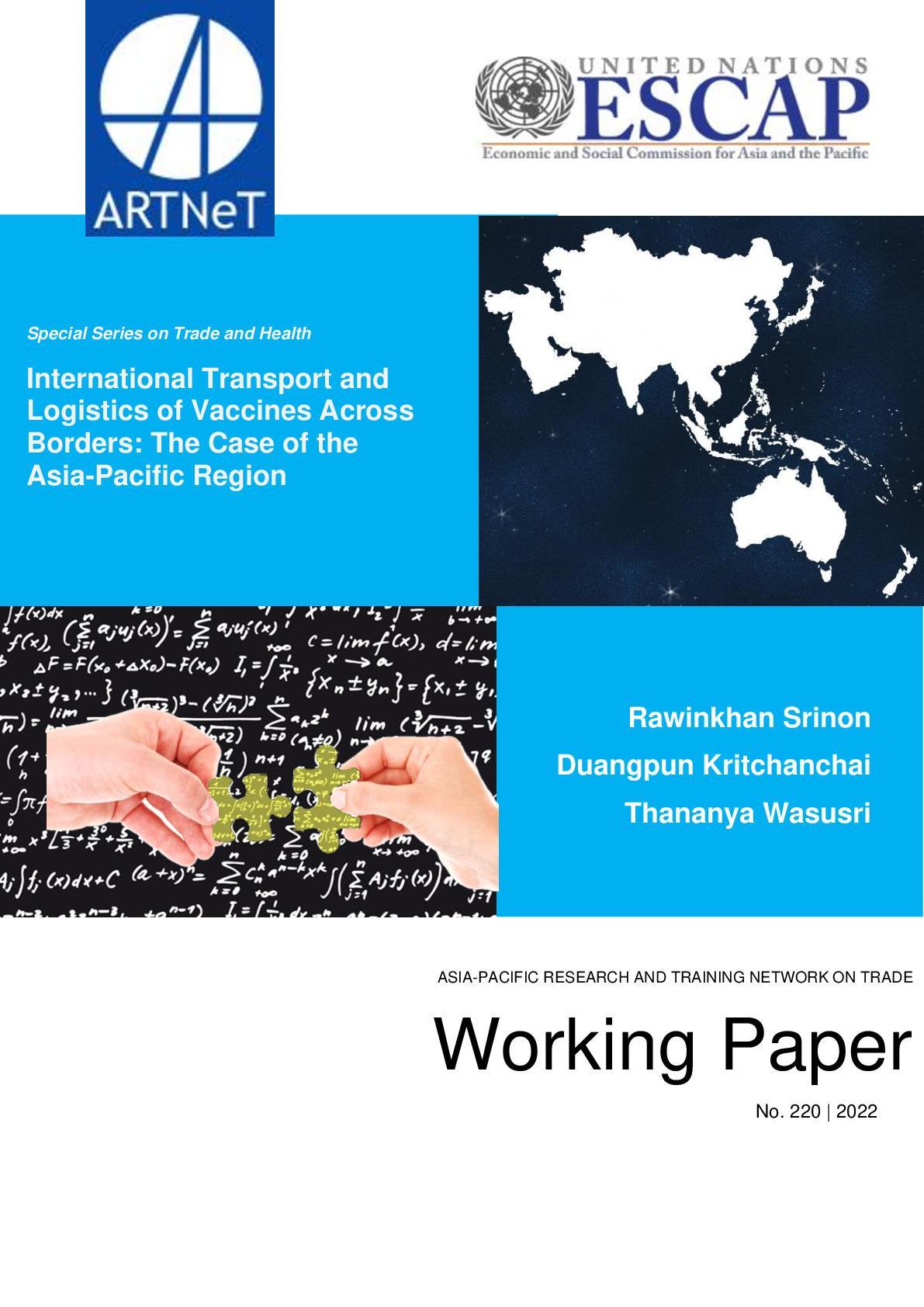International Transport and Logistics of Vaccines Across Borders: The Case of the Asia-Pacific Region

Vaccines against the coronavirus disease (COVID-19) have provided hope for containing the pandemic, but there are challenging obstacles to international transport and logistics of the new vaccines and vaccine inputs needed for manufacturing. This study identifies key barriers in the Asia-Pacific region to the timely and effective transport of vaccines from the countries where they are manufactured to the countries where they are needed.
The main hurdles for vaccines are import and export restrictions and limitations, and the lack of policy priority. Major bottlenecks include securing vaccine import approval by the national food and drug authority, having correct and efficient shipment routes (reliable direct flights and transport capacity), ensuring timeliness on customs clearance along with security control measures, assuring cold chain integrity along the supply chain and implementing transparency and visibility through tracking and tracing systems. It is recommended that Governments develop a national cold chain tracking and tracing system to ensure information sharing and monitoring. Furthermore, there is a lack of cold chain capacity for traditional, frozen and ultra-cold vaccines, in particular in low-income and lower-middle-income countries in the Pacific and Central Asia subregions.
To overcome obstacles and ease bottlenecks for import and export of vaccines and vaccine inputs, it is recommended that Governments in the region ensure good cooperation and coordination, including national, regional and international cooperation, among key industrial stakeholders in the public and private sectors. Such cooperation and coordination will help to smooth and ease the import and export process for both vaccines and vaccine inputs. Many countries in the region, such as Australia, India, Indonesia and Thailand, have reduced the cross-border processing time to less than three hours. Lastly, cold chain facilities and readiness are the key to the supply chain of vaccines. Where complying with different requirements and procedures for temperature management and control of different vaccines during transportation and cross-border processing is a challenge, it is recommended to conduct country-wide personnel training with an easy-to-understand procedure manual in local languages to build flexibility and capability.
